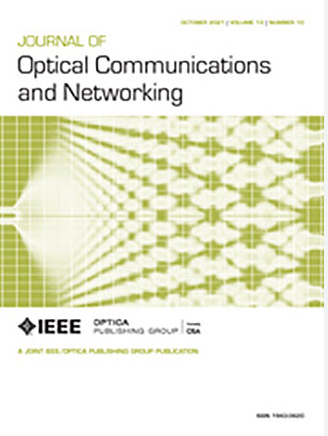Daylight quantum key distribution over free-space optics for future security networks
IF 4.3
2区 计算机科学
Q1 COMPUTER SCIENCE, HARDWARE & ARCHITECTURE
引用次数: 0
Abstract
As the demand for better security and higher capacity grows, quantum key distribution (QKD) using free-space optics (FSO) presents an innovative solution for 5G networks and beyond. The Innovate-UK AirQKD project explores how FSO–QKD could enable quantum-secure connections at a metropolitan scale, focusing on the critical “last-mile” of connectivity. However, implementing FSO–QKD in the real world brings several engineering challenges, spanning software, hardware, system integration, and security. This paper dives into the complexities of system architecture and integration, QKD transmission over FSO, and the post-processing of keys. We showcase a cohesive system design that blends the quantum and classical domains, incorporating cutting-edge FSO–QKD hardware and software. The system’s functionality is demonstrated for key processes such as transmission, post-processing, network control, and key management. As a case study, we tested an FSO–QKD link over 135 m at BT’s Adastral Park in Suffolk, UK. The setup achieved a photon count rate of up to 585 kcps through a channel with 15.9 dB of loss and 12 kHz of background noise, resulting in a security key rate (SKR) of up to 84.3 kbps using two detectors. We also conducted simulations to estimate the SKR and compared them with the experimental results. Both approaches confirm the system’s ability to generate keys and successfully transmit orthogonal polarization states, highlighting its potential for practical application.未来安全网络自由空间光学上的日光量子密钥分配
随着对更高安全性和更高容量需求的增长,使用自由空间光学(FSO)的量子密钥分发(QKD)为5G及以后的网络提供了一种创新的解决方案。Innovate-UK AirQKD项目探索FSO-QKD如何在城域范围内实现量子安全连接,重点关注关键的“最后一英里”连接。然而,在现实世界中实现FSO-QKD带来了几个工程挑战,涉及软件、硬件、系统集成和安全性。本文深入研究了系统架构和集成的复杂性,通过FSO传输QKD,以及密钥的后处理。我们展示了一个融合量子和经典领域的内聚系统设计,结合了尖端的FSO-QKD硬件和软件。该系统在传输、后处理、网络控制和密钥管理等关键过程中的功能进行了演示。作为案例研究,我们在英国萨福克郡英国电信的Adastral公园测试了超过135米的FSO-QKD链路。该装置通过15.9 dB损耗和12 kHz背景噪声的信道实现了高达585 kcps的光子计数率,使用两个探测器的安全密钥速率(SKR)高达84.3 kbps。我们还进行了模拟来估计SKR,并与实验结果进行了比较。这两种方法都证实了系统能够生成密钥并成功传输正交偏振态,突出了其实际应用的潜力。
本文章由计算机程序翻译,如有差异,请以英文原文为准。
求助全文
约1分钟内获得全文
求助全文
来源期刊
CiteScore
9.40
自引率
16.00%
发文量
104
审稿时长
4 months
期刊介绍:
The scope of the Journal includes advances in the state-of-the-art of optical networking science, technology, and engineering. Both theoretical contributions (including new techniques, concepts, analyses, and economic studies) and practical contributions (including optical networking experiments, prototypes, and new applications) are encouraged. Subareas of interest include the architecture and design of optical networks, optical network survivability and security, software-defined optical networking, elastic optical networks, data and control plane advances, network management related innovation, and optical access networks. Enabling technologies and their applications are suitable topics only if the results are shown to directly impact optical networking beyond simple point-to-point networks.

 求助内容:
求助内容: 应助结果提醒方式:
应助结果提醒方式:


